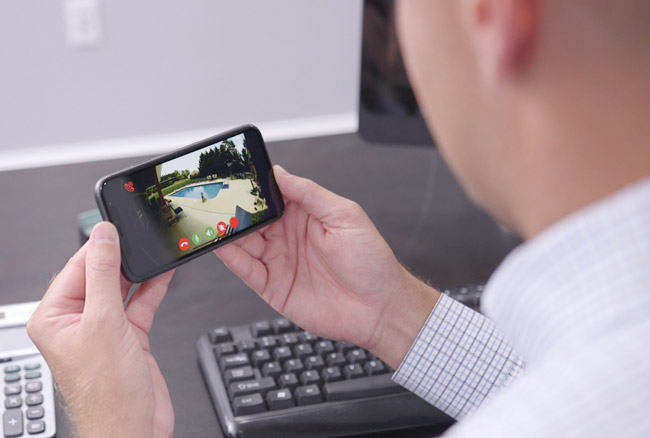Several studies estimate that the global smart home security camera industry will grow to over $10 billion in the next five years. Its major players are focused on providing tools to prevent home break-ins and burglaries, but a new startup in the Hudson Valley intends to use the technology to help prevent drowning deaths.
Asher Brand, CEO of SwamCam, was inspired to create the security system when he and his wife were faced with the combination of a new house with a pool and young children, which he saw as a huge potential danger.
“Nearly every summer, I would read articles about accidental drownings and the unfortunate loss of life, especially young children,” Brand said.

“In early 2018, after discussing the idea with our developer, we began the brainstorming process. Shortly thereafter, there were two different pool drownings the same day that were reported in the news, one of which was the child of a high-profile family. This further inspired me to work on this project.”
More than 300 children under the age of 5 die from drowning each year, and most of those deaths occur in residential swimming pools. Even if drowning accidents do not result in death, they can also result in brain damage or long-term disability, according to the Centers for Disease Control and Prevention.
Brand noticed that most products on the market had their flaws and numerous critical consumer reviews. Many were only for in-water use, designed to alert users about potential drownings only when people were already in the water, and when the camera system is enabled by the user.
Artificial intelligence was necessary to the project, in order for the camera to be able to recognize threats.
“Our developers have worked on other products, which include live video feed over Wi-Fi, and so we”™re somewhat familiar with the landscape of what we needed,” Brand said. “This was definitely helpful in shortening the development process, but our system is so unique that it still required an enormous effort to accomplish what we did with the little resources that we worked with.”
With SwamCam, the device is always on, enabling homeowners to constantly monitor their pools through a connection to a smartphone app. Additionally, the AI incorporated into it recognizes when an individual enters the pool area unexpectedly when the pool area is armed and alerts the owner”™s phone.
Based in Montebello, Rockland County, SwamCam launched only about two months ago, but spent much longer preparing and developing the necessary technology. The unit sells for $495.
“We spent the last three years building, testing and perfecting our product,” Brand said. “We now have a fully integrated and interactive camera and alarm system that can be controlled with our app from any smartphone device.”
It features an interactive camera with a fisheye lens, an integrated speaker to allow the pool owner to communicate remotely with anyone who has entered the pool area and the ability to automatically alarm the device if the owner forgets to do so.
If and when the pool area is breached when the device is armed, it sounds an alarm in the pool area, on the owner”™s smartphone and in the owner”™s home. It also has a direct 911 contact feature.
While SwamCam cannot prevent all drowning deaths, it can add several significant layers of protection to a residential pool environment, which can be potentially life saving ”” the reason, Brand says, that he created it.
“Our goal is to save lives,” he said. “We believe that if every residential pool in the U.S. would have a SwamCam installed, the risk of accidental drownings would be significantly reduced.”






















